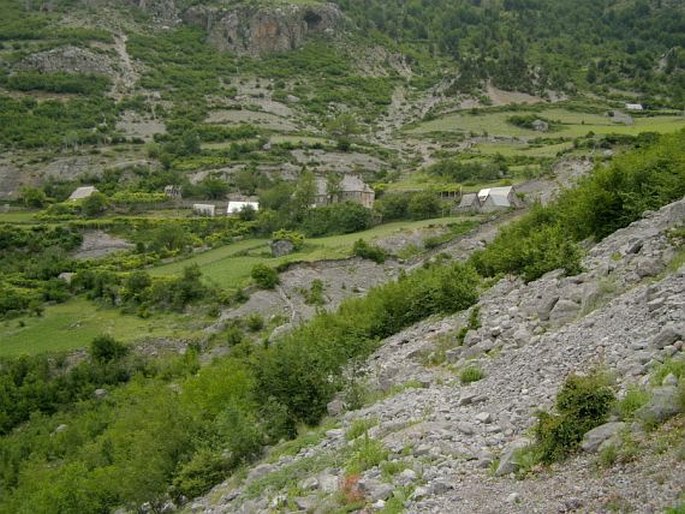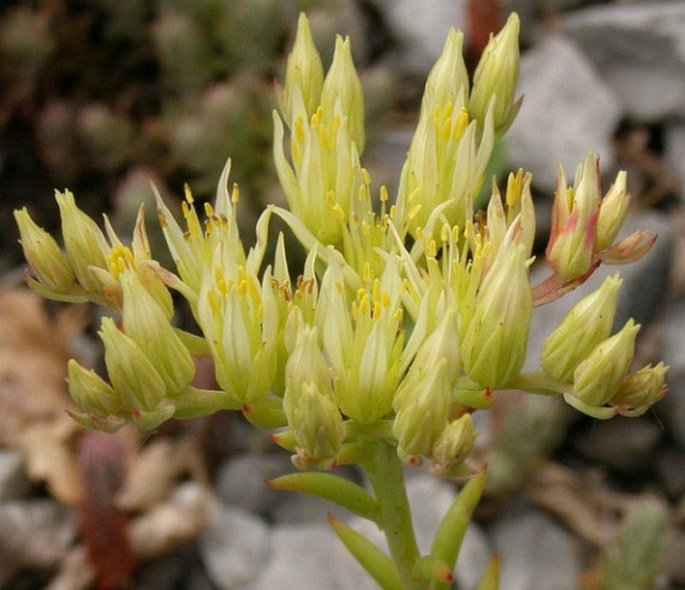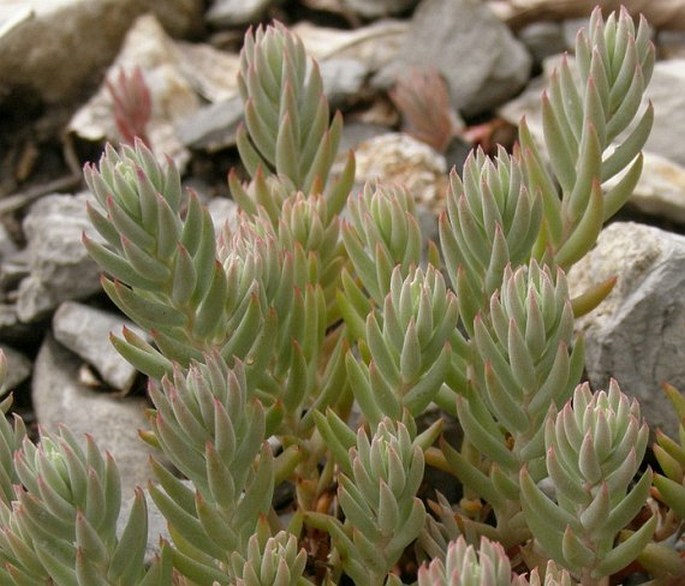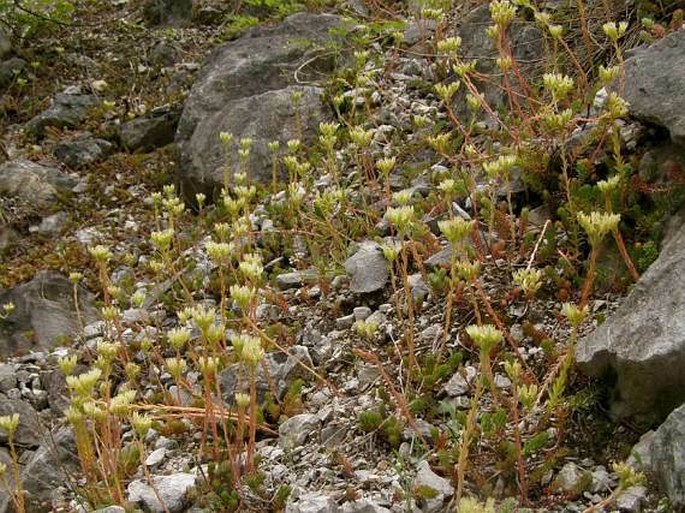Syn.: Petrosedum anopetalum (DC.) Grulich, Petrosedum rupestre subsp. anopetalum (DC.) Velayos, Sedum anopetalum DC., Sedum verlotii Jord.
Family: Crassulaceae J. St.-Hil.

Distribution: It occurs from Spain to Greece and Turkey in the east. In the north to Switzerland, southern foothills of the Alps in Italy, Slovenia, Serbia and Romania. Often cultivated as an ornamental plant.
Ecology: It grows in rocky slopes and gravelly screes, on limestones and dolomites, up to 2000 m a. s. l. Flowers from June to July.

Description: A perennial, glaucous herb. The flowering stems are 15–30 cm high, the leaves terete, linear-cylindrical, acuminate, distinctly spurred, suberect, loosely imbricate on the non-flowering shoots. The inflorescense is corymbose, erect in bud, flat in flowering time. The flowers are 5–8-merous, subsessile. The sepals 5–7 mm, triangular-lanceolate, acuminate, glandular-puberulent. The petals are 7–10 mm long. The follicles are greenish, erect.



These images were taken in the Prokletije Mts. in Albania (June 27, 2010; July 2, 2011).


